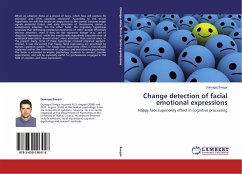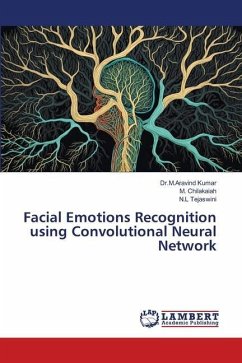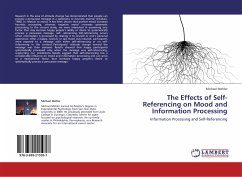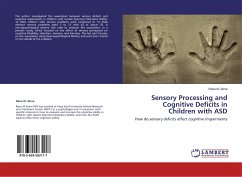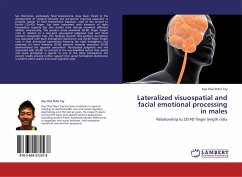
Lateralized visuospatial and facial emotional processing in males
Relationship to 2D:4D finger length ratio
Versandkostenfrei!
Versandfertig in 6-10 Tagen
32,99 €
inkl. MwSt.

PAYBACK Punkte
16 °P sammeln!
Sex Hormones, particularly fetal testosterone, have been linked to the development of cerebral laterality and sex-specific cognitive capacities. A putative marker of fetal testosterone exposure, ratio of the second to fourth (2D:4D) finger, has been associated with elements of right hemisphere capacity but few studies have directly examined different abilities concurrently. The present study examined 2D:4D finger length ratio in relation to a two-part visuospatial judgment task and facial emotion recognition task. The findings showed that emotion perception was associated with both hemispheric...
Sex Hormones, particularly fetal testosterone, have been linked to the development of cerebral laterality and sex-specific cognitive capacities. A putative marker of fetal testosterone exposure, ratio of the second to fourth (2D:4D) finger, has been associated with elements of right hemisphere capacity but few studies have directly examined different abilities concurrently. The present study examined 2D:4D finger length ratio in relation to a two-part visuospatial judgment task and facial emotion recognition task. The findings showed that emotion perception was associated with both hemispheric dominance and 2D:4D finger length ratio in that directional asymmetries favoring the right hemisphere was observed for more feminine 2D:4D patterns whereas masculine 2D:4D demonstrated the opposite association. Visuospatial judgment was not associated with 2D:4D. In contrast to the oversimplified notion that spatial and social perception is specific to one or the other hemisphere, the current results provide further support that varied hemispheric dominance is evident within spatial and social cognitive tasks.



